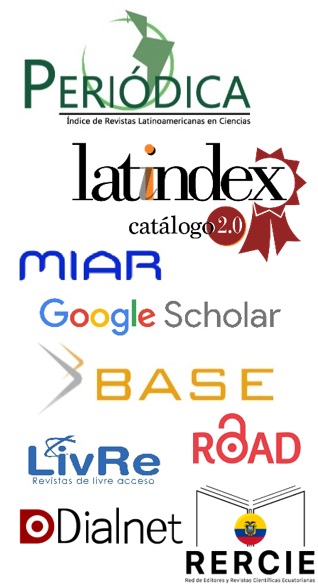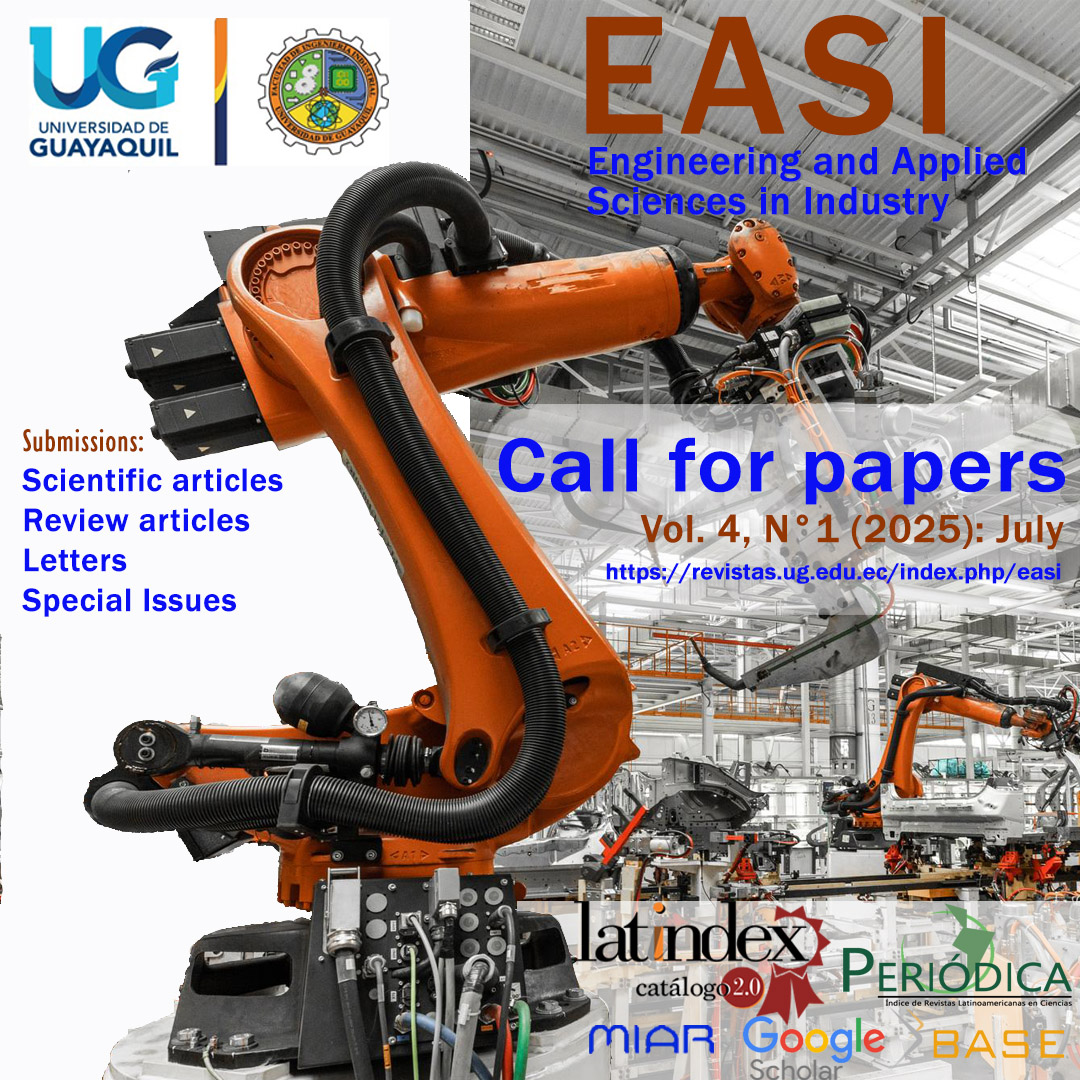Distributed system of low-consumption sensors to monitor environmental variables in indoor spaces
DOI:
https://doi.org/10.53591/easi.v1i1.1766Keywords:
distributed network, environmental sensors, humidity, temperature, data baseAbstract
Currently, the analysis of air quality and environmental conditions
in indoor environments have been an important subject of study, because
people spend most of the day in closed places, such as buildings, houses,
classrooms, offices, etc. This article describes the development of a
prototype of a distributed network of environmental sensors, which are
responsible for measuring the environmental variables of humidity and
temperature, with efficient sensors, low cost and low energy consumption.
This system allows monitoring three different points within a different
environmental setting, located in strategic places, thus obtaining a different
sample. The prototypes capture the measurements of the environmental
variables and register them in a database contained in a web server to later
be presented to the end user. These measurements are made and displayed in
real time.
References
Afzal, M., Li, J., Amin, W., Huang, Q., Umer, K., Ahmad, S. A., Ahmad, F., & Raza, A. (2022). Role of blockchain technology in transactive energy market: A review. Sustainable Energy Technologies and Assessments, 53, 102646. https://doi.org/10.1016/j.seta.2022.102646
Alvi, S. T., Uddin, M. N., Islam, L., & Ahamed, S. (2022). DVTChain: A blockchain-based decentralized mechanism to ensure the security of digital voting system voting system. Journal of King Saud University - Computer and Information Sciences. https://doi.org/10.1016/j.jksuci.2022.06.014
Broday, D. M., Arpaci, A., Bartonova, A., Castell-Balaguer, N., Cole-Hunter, T., Dauge, F. R., Fishbain, B., Jones, R. L., Galea, K., Jovasevic-Stojanovic, M., Kocman, D., Martinez-Iñiguez, T., Nieuwenhuijsen, M., Robinson, J., Svecova, V., & Thai, P. (2017). Wireless distributed environmental sensor networks for air pollution measurement-the promise and the current reality. Sensors (Switzerland), 17(10). https://doi.org/10.3390/s17102263
Budi, S., Susanto, F., de Souza, P., Timms, G., Malhotra, V., & Turner, P. (2018). In search for a robust design of environmental sensor networks. Environmental Technology (United Kingdom), 39(6). https://doi.org/10.1080/09593330.2017.1310303
Chan, K., Schillereff, D. N., Baas, A. C. W., Chadwick, M. A., Main, B., Mulligan, M., O’Shea, F. T., Pearce, R., Smith, T. E. L., van Soesbergen, A., Tebbs, E., & Thompson, J. (2021). Low-cost electronic sensors for environmental research: Pitfalls and opportunities. Progress in Physical Geography, 45(3). https://doi.org/10.1177/0309133320956567
Dhall, S., Mehta, B. R., Tyagi, A. K., & Sood, K. (2021). A review on environmental gas sensors: Materials and technologies. In Sensors International (Vol. 2). https://doi.org/10.1016/j.sintl.2021.100116
Guo, H., & Yu, X. (2022). A survey on blockchain technology and its security. Blockchain: Research and Applications, 3(2). https://doi.org/10.1016/j.bcra.2022.100067
Han, Q., Liu, P., Zhang, H., & Cai, Z. (2019). A Wireless Sensor Network for Monitoring Environmental Quality in the Manufacturing Industry. IEEE Access, 7. https://doi.org/10.1109/ACCESS.2019.2920838
Handayani, A. S., Husni, N. L., Nurmaini, S., & Permatasari, R. (2020). Environmental Application with Multi Sensor Network. Computer Engineering and Applications, 9(1).
Jumaah, H. J., Kalantar, B., Mansor, S., Halin, A. A., Ueda, N., & Jumaah, S. J. (2021). Development of UAV-based PM2.5 monitoring system. Drones, 5(3). https://doi.org/10.3390/drones5030060
Khan, K. M., Arshad, J., & Khan, M. M. (2020). Simulation of transaction malleability attack for blockchain-based e-Voting. Computers and Electrical Engineering, 83. https://doi.org/10.1016/j.compeleceng.2020.106583
Liao, Z., & Cheng, S. (2023). RVC: A reputation and voting based blockchain consensus mechanism for edge computing-enabled IoT systems. Journal of Network and Computer Applications, 209, 103510. https://doi.org/10.1016/J.JNCA.2022.103510
Liu, Y., & Xu, G. (2021). Fixed degree of decentralization DPoS consensus mechanism in blockchain based on adjacency vote and the average fuzziness of vague value. Computer Networks, 199. https://doi.org/10.1016/j.comnet.2021.108432
Mao, F., Khamis, K., Krause, S., Clark, J., & Hannah, D. M. (2019). Low-Cost Environmental Sensor Networks: Recent Advances and Future Directions. In Frontiers in Earth Science (Vol. 7). https://doi.org/10.3389/feart.2019.00221
Merlo, V., Pio, G., Giusto, F., & Bilancia, M. (2022). On the exploitation of the blockchain technology in the healthcare sector: A systematic review. Expert Systems with Applications, 118897. https://doi.org/10.1016/j.eswa.2022.118897
Mookherji, S., Vanga, O., & Prasath, R. (2022). Blockchain-based e-voting protocols. Blockchain Technology for Emerging Applications: A Comprehensive Approach, 239–266. https://doi.org/10.1016/B978-0-323-90193-2.00006-5
Ooi, V., Kian Peng, S., & Soh, J. (2022). Blockchain land transfers: Technology, promises, and perils. Computer Law and Security Review, 45. https://doi.org/10.1016/j.clsr.2022.105672
Panja, S., & Roy, B. (2021). A secure end-to-end verifiable e-voting system using blockchain and cloud server. Journal of Information Security and Applications, 59. https://doi.org/10.1016/j.jisa.2021.102815
Perez, A. O., Bierer, B., Scholz, L., Wöllenstein, J., & Palzer, S. (2018). A wireless gas sensor network to monitor indoor environmental quality in schools. Sensors (Switzerland), 18(12). https://doi.org/10.3390/s18124345
Qutieshat, A., Aouididi, R., & Arfaoui, R. (2019). Design and Construction of a Low-Cost Arduino-Based pH Sensor for the Visually Impaired Using Universal pH Paper. Journal of Chemical Education, 96(10). https://doi.org/10.1021/acs.jchemed.9b00450
Rahman, M. S., Chamikara, M. A. P., Khalil, I., & Bouras, A. (2022). Blockchain-of-blockchains: An interoperable blockchain platform for ensuring IoT data integrity in smart city. Journal of Industrial Information Integration, 30, 100408. https://doi.org/10.1016/J.JII.2022.100408
Rajasekaran, A. S., Azees, M., & Al-Turjman, F. (2022). A comprehensive survey on blockchain technology. Sustainable Energy Technologies and Assessments, 52. https://doi.org/10.1016/j.seta.2022.102039
Verma, M. (2017a). International journal of engineering sciences & research technology working, operation and types of arduino microcontroller. International Journal of Engineering Sciences & Research Technology Working, 6(6).
Verma, M. (2017b). Working, Operation and Types of Arduino Microcontroller. © International Journal of Engineering Sciences & Research Technology, 6(6).
Xu, Y., Tao, X., Das, M., Kwok, H. H. L., Liu, H., Wang, G., & Cheng, J. C. P. (2023). Suitability analysis of consensus protocols for blockchain-based applications in the construction industry. Automation in Construction, 145, 104638. https://doi.org/10.1016/J.AUTCON.2022.104638
Yang, X., Yi, X., Nepal, S., Kelarev, A., & Han, F. (2020). Blockchain voting: Publicly verifiable online voting protocol without trusted tallying authorities. Future Generation Computer Systems, 112, 859–874. https://doi.org/10.1016/j.future.2020.06.051
Yu, F., Lin, H., Wang, X., Yassine, A., & Hossain, M. S. (2022). Blockchain-empowered secure federated learning system: Architecture and applications. Computer Communications. https://doi.org/10.1016/j.comcom.2022.09.008
Zheng, K., Zheng, L. J., Gauthier, J., Zhou, L., Xu, Y., Behl, A., & Zhang, J. Z. (2022). Blockchain technology for enterprise credit information sharing in supply chain finance. Journal of Innovation and Knowledge, 7(4). https://doi.org/10.1016/j.jik.2022.100256
Downloads
Additional Files
Published
How to Cite
Issue
Section
License
Copyright (c) 2022 Oliver Palacios, Angel Marcel Plaza Vargas, Katty Nancy Lino Castillo

This work is licensed under a Creative Commons Attribution-NonCommercial-NoDerivatives 4.0 International License.
Contributions published in the EASI journal follow the open access license CC BY-NC-ND 4.0 (Creative Commons Attribution-NonCommercial-NoDerivs 4.0). This license empowers you as an author and ensures wide dissemination of your research while still protecting your rights.
For authors:
- Authors retain copyrights without restrictions according to CC BY-NC-ND 4.0 license.
- The journal obtains a license to publish the first original manuscript.
For readers/users:
Free access and distribution: Anyone can access, download, copy, print, and share the published article freely according to the license CC BY-NC-ND 4.0 terms.
Attribution required: If any third party use the published material, they must give credit to the creator by providing the name, article title, and journal name, ensuring the intellectual property of the author(s), and helping to build the scholarly reputation.
Non-commercial use: only noncommercial use of the published work is permitted. Noncommercial means not primarily intended for or directed towards commercial advantage or monetary compensation by any third party.
No modifications allowed: The content of the published article cannot be changed, remixed, or rebuilt upon the author’s work. This ensures the integrity and accuracy of the research findings.



